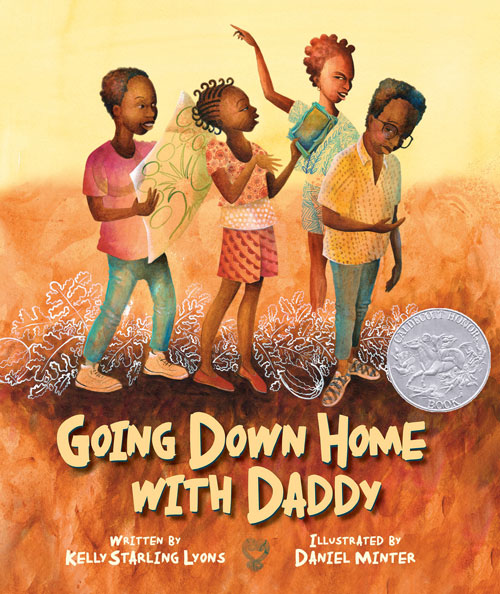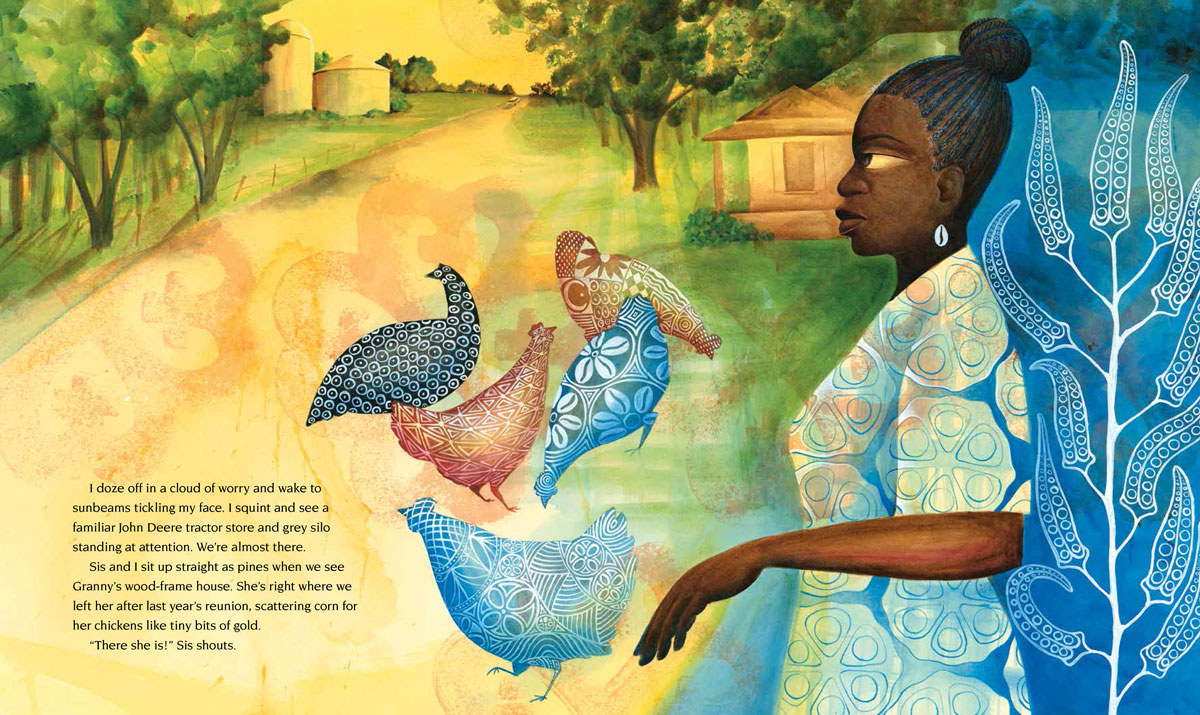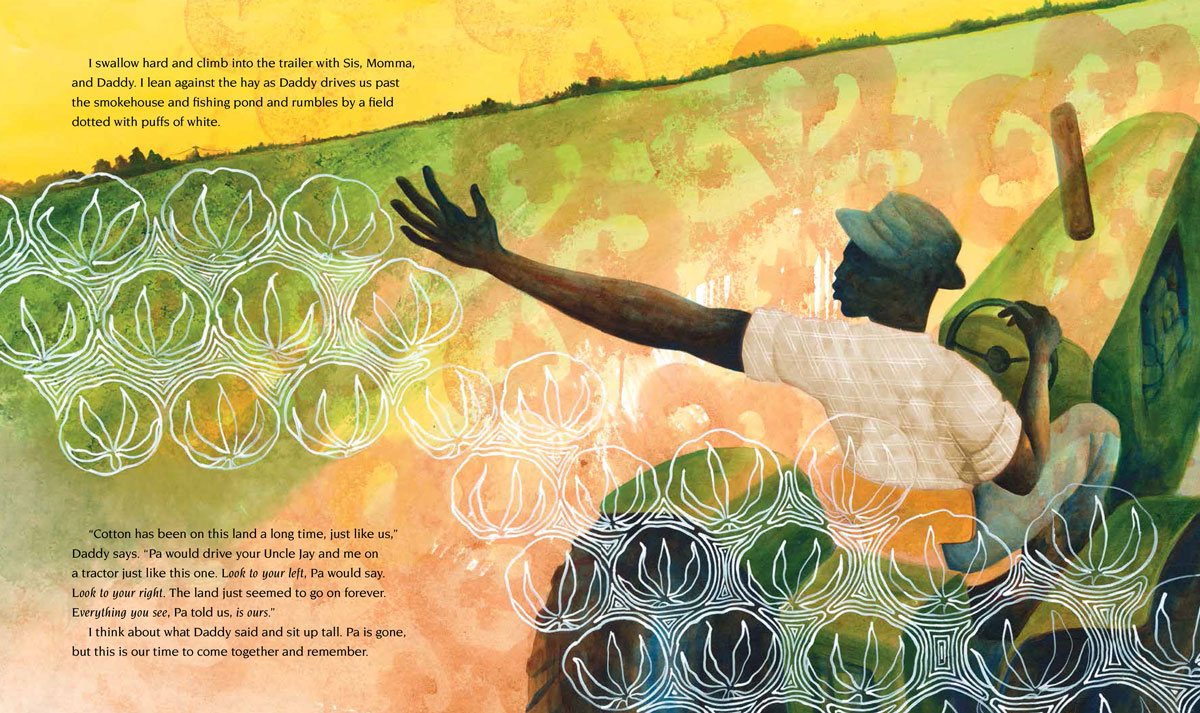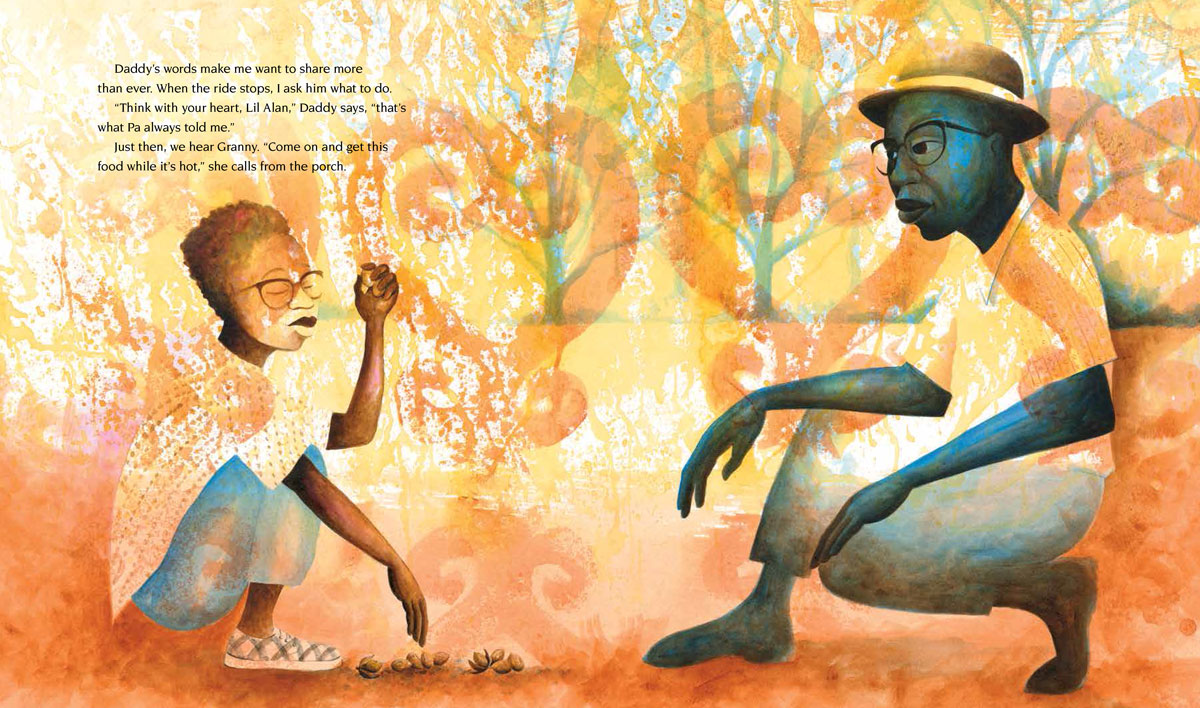It’s not every day that we get to hear from someone whose work received a Caldecott Honor, so we are thrilled to welcome Daniel Minter to the Mackin Community Blog. Not only is he an internationally renowned painter, but he has also illustrated several children’s books. In today’s post, Minter discusses his journey to becoming an artist and illustrator, as well as the inspiration behind his illustrations for the book, Going Down Home with Daddy.
 People are often curious about how illustrators chose their career path and what inspires their work. For me, there were not really any “artists” where I grew up, but there were lots of people who made things and did things and who were creative, and so ever since I could remember I have known that I wanted to make things. I started with drawing, but the more painting I did and art classes I took, I realized I could use this skill to become an illustrator.
People are often curious about how illustrators chose their career path and what inspires their work. For me, there were not really any “artists” where I grew up, but there were lots of people who made things and did things and who were creative, and so ever since I could remember I have known that I wanted to make things. I started with drawing, but the more painting I did and art classes I took, I realized I could use this skill to become an illustrator.
Most of my artwork deals with social commentary, the natural world, and our connections to it as humans. Many of the manufactured definitions of who we are create barriers to finding those connections to the earth and to each other.
Generally, I’m inspired by relationships in my art, and I try to illuminate different connections that are found throughout the diaspora—connections to family, connections to land, and connections to the rituals that ground us and remind us of who we are and where we came from. These connections and my own perspective of them are in Going Down Home with Daddy. When I start working on a book’s illustrations, I’m responding to the text provided. In this case, Kelly’s text had a lot to work with, and a lot I could relate to on a personal level.

Going Down Home with Daddy is about a family that lives in the city and is returning to the rural South for a family reunion. I grew up in a rural part of the South, and I had uncles and aunts who moved to the city but would come visit us in the summer, like Lil Alan’s family. It was always an exciting time when they would visit, so I knew I had that perspective to contribute to this book. The setting in Going Down Home with Daddy is very much inspired by Ellaville, Georgia, where I grew up. The landscape, the trees, the light—all of those are representations of what I remember from there. I learned a lot there about different connections—with family, community, society—and the importance of all of those things, and I return to those lessons, and my connection to that land, over and over.
Lil Alan throughout the book is slowly making connections to his great-grandmother’s land. In one spread, he and his father are sharing a moment talking about the history of the land. The sitting-kneeling position was important for me to show, because my father and other men in our family would sit outside or in an open field without chairs. Children would just plop down in the dirt without care, so that image also represents a move towards manhood for Lil Alan as he imitates his father’s sitting position instead of that of a child. Finally, toward the end of the book, Lil Alan’s connection to the land is sealed when he reaches down to take the earth and plants into his hands and says, “And earth for land that’s ours as far as we can see.”
There are a lot of recurring patterns in my work, including the Adinkra symbols that are stamped on the background of every spread. These patterns are from Ghana, West Africa, and I included them as a key to what the story is about—understanding your connection to your family history. I used three different symbols: one for “abundance,” one for “the presence of god,” and the Sankofa, which represents remembering the past and looking to the past to learn for the future. Those symbols were chosen to correlate to the activities on the page—whether it’s the symbol for “abundance” on the spread where the family is sitting down to eat, or the Sankofa on the spreads where Lil Alan is paying tribute to his family and their history.
Our culture in the South grew out of West African culture, and I tried to portray that in this book in different forms. In one of the earlier spreads, Granny is covered in okra patterns with the okra plant behind her. Okra is a ritual food we brought from Africa, and it keeps us connected to our ancestors. Granny is also wearing a cowry shell earring. Cowry shells were used as currency in West Africa, and they have become a powerful symbol of protection and wealth. Light flows from her hand to signify her sprinkling daylight upon the earth while feeding her chickens. She is the connection to the family history and the past. Her gesture is also echoed in Lil Alan’s hand in the scene where he is sitting with his father.
A lot of my ideas for this book also relate to branches and roots, how one thing is an extension of another. You can see those images in Granny’s dress at the end—it is all branches to show not only how she is rooted in her land and where she came from, but also that her family in an extension of her.
While this book shows one particular experience of an African American family, I continue to be moved hearing about all the people who connect with this book and this experience in many different ways. Just like Lil Alan and his family in the book, I was also able to connect to my own history while working on the illustrations, and I have learned, and continue to share, more about myself because of it. I hope that readers will find their own connections to their family and history after reading Going Down Home with Daddy.









